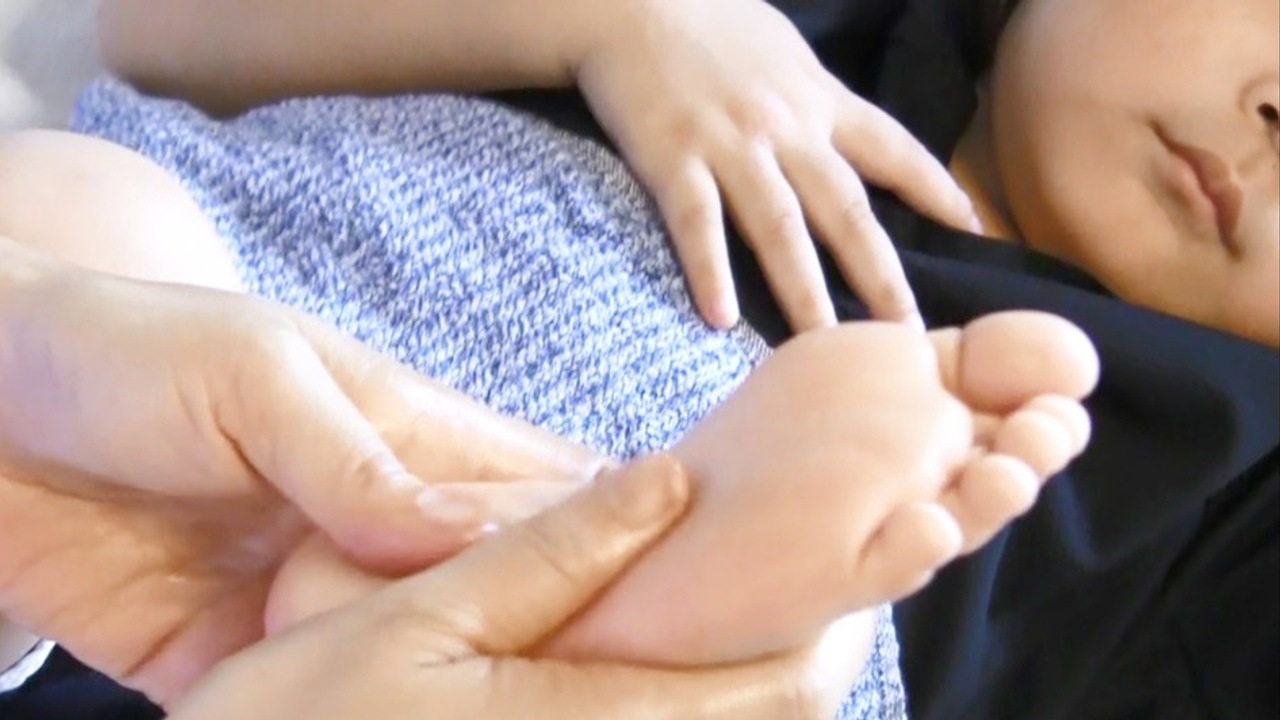Massage Heals Sick Kids
Apr 25, 2021
By: Tina Allen, LMT, CIIT, CIMI
Immediately after receiving a massage, children with mild to moderate juvenile rheumatoid arthritis notice decreased anxiety and stress hormone (cortisol) levels. For young patients with Autism, their aversion to touch decreases with massage, while their ability to focus increases.
Pediatric patients with cystic fibrosis report feeling less anxious, and their ability to breathe and pulmonary functions improved. For the massage therapist or healthcare professional considering pediatric massage therapy, there are many considerations to prepare for providing age-specific and developmentally appropriate therapy.
Additional professional training in pediatric massage is a necessity to feel confident working with children within medical facilities. Some initial adaptations in your practice will become helpful, as you consider pursuing pediatric massage. The following five “P’s” are the keys to successful therapeutic massage sessions for both pediatric patients and practitioners.
Permission:
Permission should always be obtained from the child. Within the confines of hospital walls, it is not always possible for a child to agree to or refuse treatment. Empowering the child to have a voice in their medical care is possible through the use of massage therapy.
Before any touch therapy session with a pediatric patient, you must receive approval from their attending physician to ensure the child’s safety. Never perform massage for kids before receiving medical consent to do so. Some medical conditions carry contraindications to touch therapy. It is always best to receive medical advisement prior to each and every session, in case of any medical changes.
Pace:
Keep in mind that therapeutic touch sessions with children are often much shorter than those with adult clients. Even children who are healthy and well have much shorter attention spans and tolerance to therapeutic touch. As a therapist performing this type of treatment, you may only provide therapy for 15-20 minutes for younger patients. You may find that with some diagnosis, child massage therapy may be recommended more than one time per day.
Pressure:
Pediatric massage is adapted for each individual client on a specific case by case basis. With each child it is important to build a rapport and trust in your professional relationship. Allow children to know they can direct the amount of pressure used during the massage. And also be prepared for the child to test out the control they have in directing the amount of pressure used during the session. The child must know they can trust you, so you must listen to their requests. Once they trust you, they can relax and just feel the many benefits of the massage.
The very experience of having some control over their bodies becomes more important for children who are chronically ill or hospitalized. For these children, their day-to-day existent in the hospital is full of experiences of adults doing things to them, sometimes painful and uncomfortable, without their permission. It is very empowering for a child to have the ability to direct their therapeutic session, and at times even refuse it.
Positioning:
Some chronically ill children are confined to their hospital bed, while others may be in a wheelchair or have the ability to move from their bed with ease. It is important to be flexible and adapt to a changing variety of scenarios. Practice different positions including supported side-lying, supine, and semi-reclined. These three positions seem to work very well, as you can keep eye contact and notice any facial gestures your young client may make which would alert you of any discomfort. Of course, it is always possible to provide massage in other positions as well, such as sitting in a wheelchair, standing, or lying in another position that is more comfortable for them. The important key is placing your hands on the child in a way that they feel most comfortable. This will increase the therapeutic and relaxing benefits of your time together.
Parents:
To many pediatric patients and their families, pediatric massage is often seen as the medicine they need to heal, so it becomes more important to consider including parents in your sessions. You can’t provide therapy for the child every day, so teaching the parents some techniques will help encourage this healthy bond between parent and child. Additionally, many parents feel helpless within the medical system. Passing along something they can use will help them to feel calm and relaxed as well, which will translate to the young client.
As you begin your massage session it is helpful to remind the parent that your focus will be on the child during the session. Let them know you will be happy to answer any of their questions at the end of the treatment. Show parents some simple techniques to help them relax, such as taking some deep breaths or rolling their shoulders. Explain the importance of relaxing before touching their child. Then show them some simple techniques they can use without harming their child. www.liddlekidz.com
Copyright (c) 2007 Liddle Kidz? Infant and Children’s Pediatric Massage
Source: Articledashboard.com
Don't Use The V-Word
Do you mind my asking you how old you are?" Linda, in her early 70's, doesn't identify as a "senior" - at least not in the context that most people think of it.
Published by James Lee
Stay connected with news and updates!
Join our mailing list to receive the latest news and updates from our team.
Don't worry, your information will not be shared.
We hate SPAM. We will never sell your information, for any reason.

